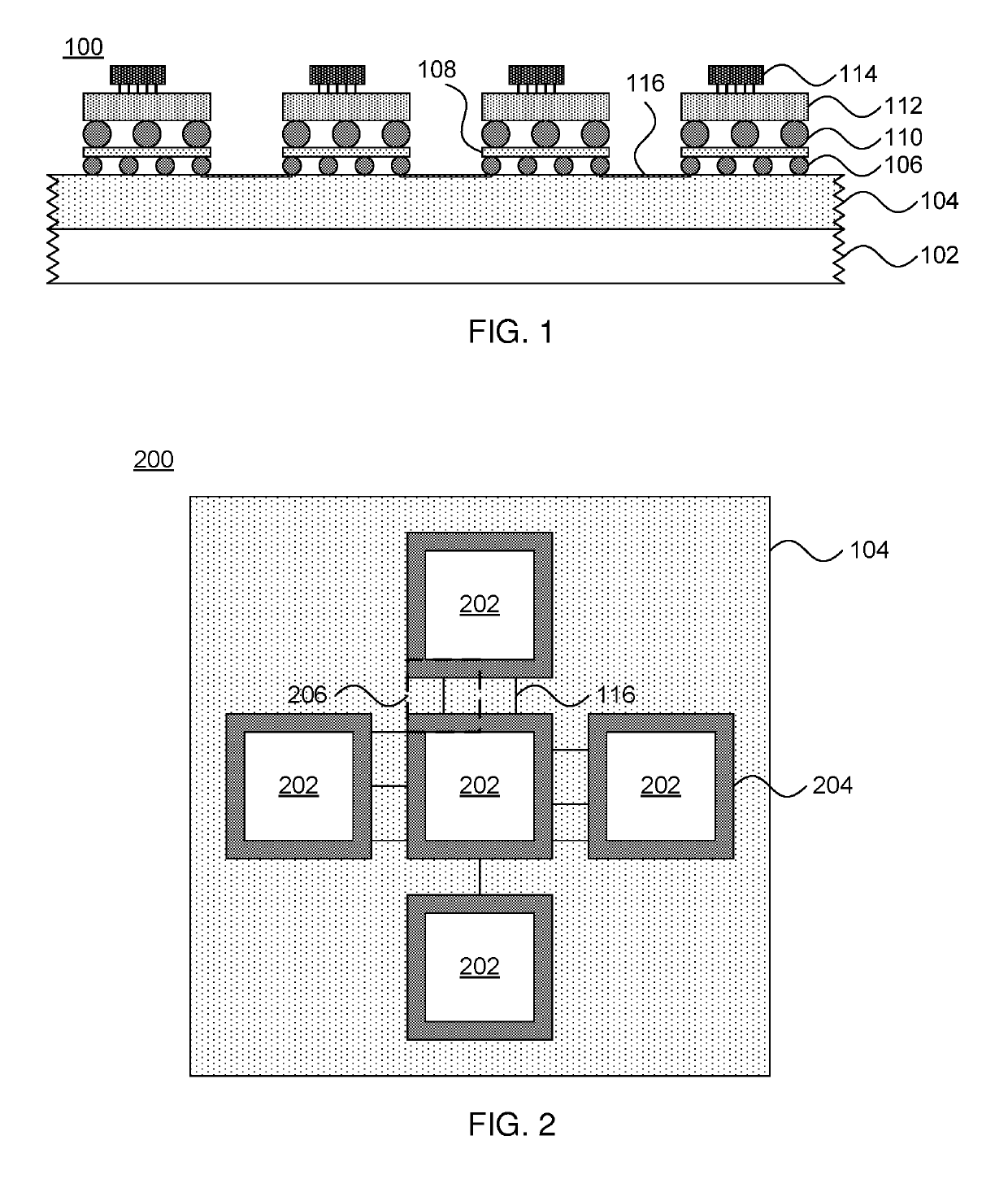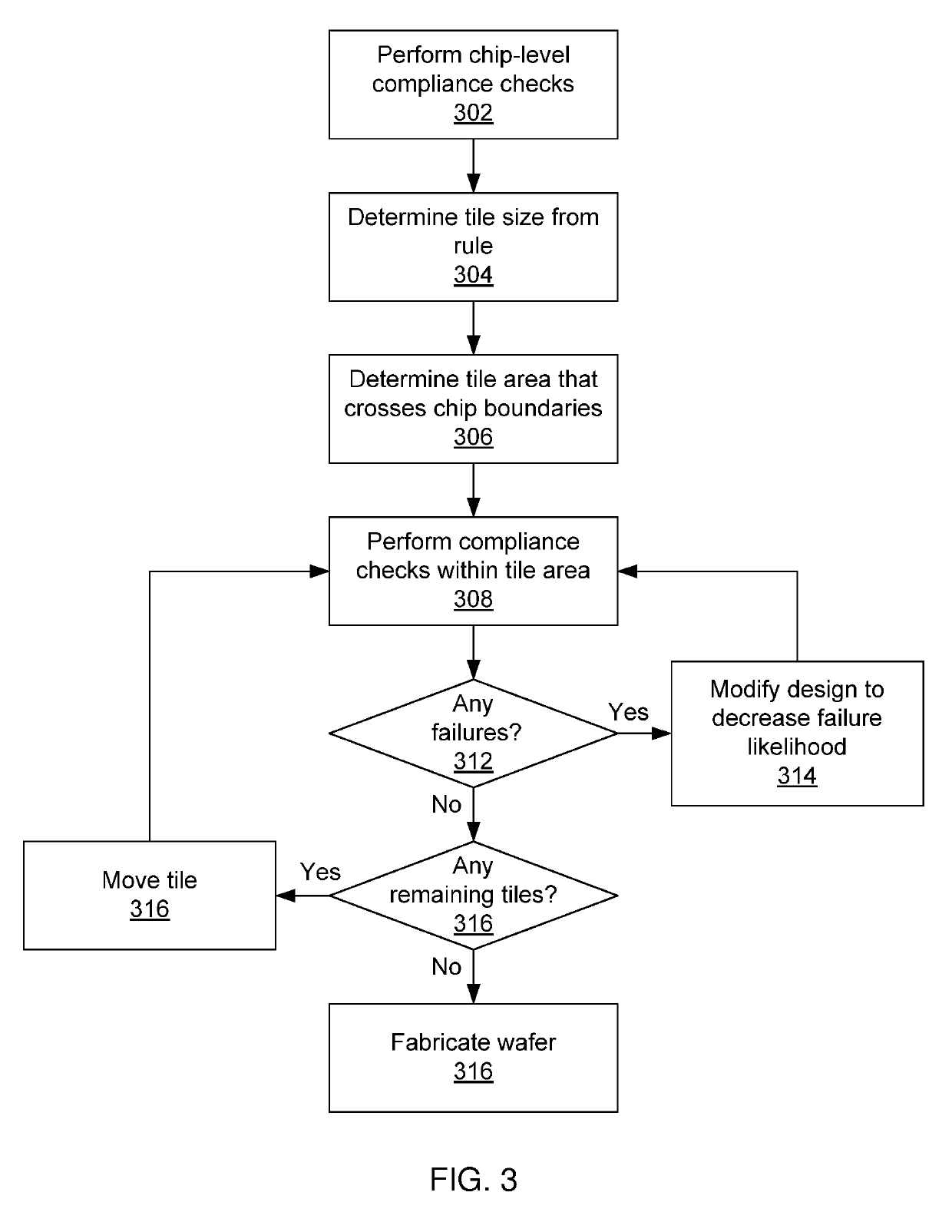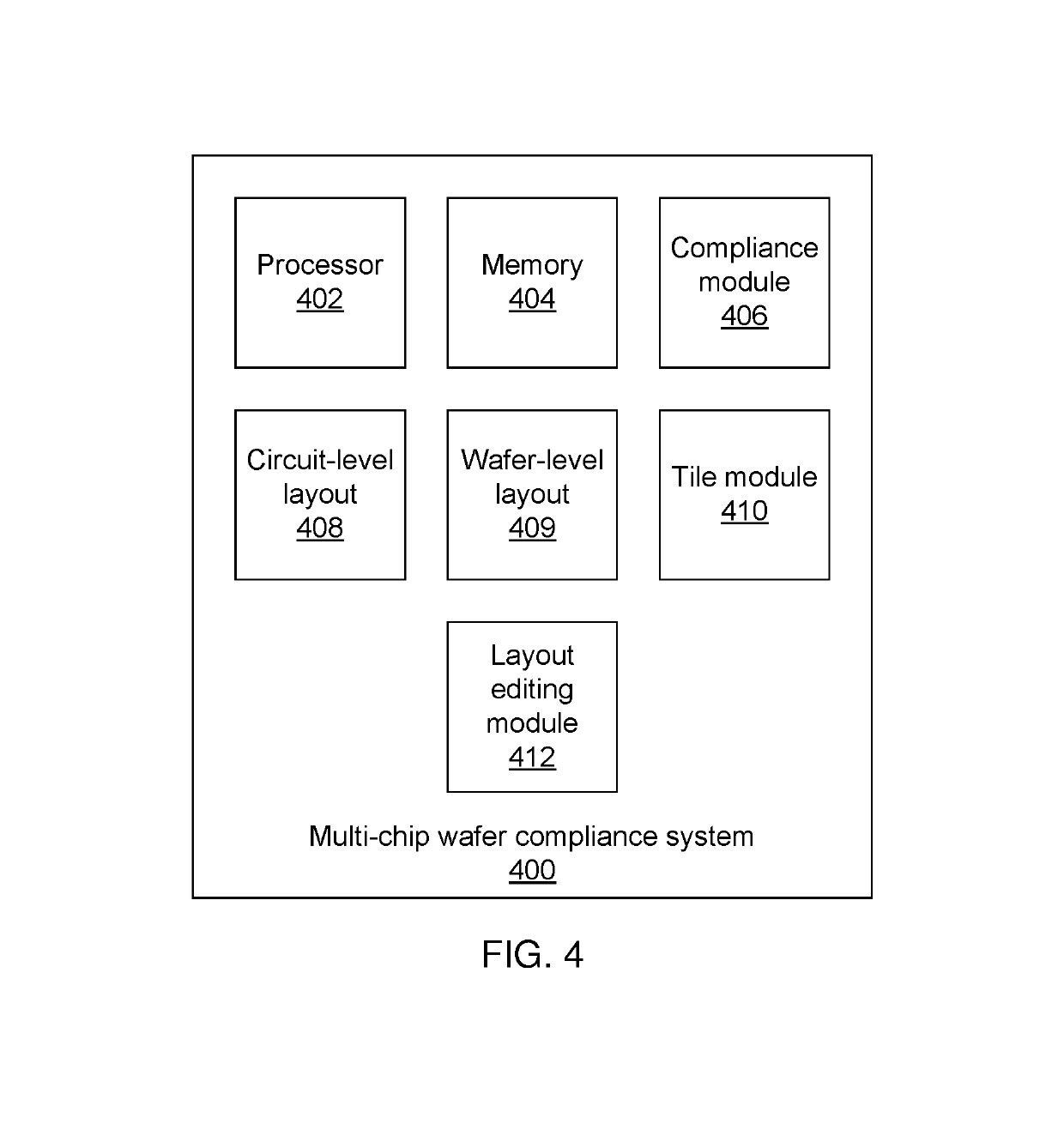Checking wafer-level integrated designs for rule compliance
a technology of integrated circuit design and rule compliance, applied in the field of integrated circuit design, can solve problems such as voltage being applied to the circuit components, damage caused by plasma induced gate oxide, and charge buildup on circuit components
- Summary
- Abstract
- Description
- Claims
- Application Information
AI Technical Summary
Benefits of technology
Problems solved by technology
Method used
Image
Examples
Embodiment Construction
[0017]Embodiments of the present invention provide antenna rule compliance checking for wafer-level integration circuit layouts. Rather than combining multiple chips into one large layout for compliance checking, which would be time consuming and would likely also have many redundancies, the present embodiments test for rule compliance along the peripheries of chips. By using a tile of a fixed size that crosses chip boundaries, and by testing for compliance within the tile, rule compliance is evaluated for local rule compliance. The chips are checked separately, such that the interior of each chip need not be checked again when compliance across chip boundaries is checked.
[0018]Referring now to the drawings, in which like numerals represent the same or similar elements, and initially to FIG. 1, a cross-sectional view of an array of chips on a wafer 100 is shown. A wafer substrate is formed from, for example, an insulator layer 102 and a semiconductor layer 104. In one specific embod...
PUM
 Login to View More
Login to View More Abstract
Description
Claims
Application Information
 Login to View More
Login to View More - R&D
- Intellectual Property
- Life Sciences
- Materials
- Tech Scout
- Unparalleled Data Quality
- Higher Quality Content
- 60% Fewer Hallucinations
Browse by: Latest US Patents, China's latest patents, Technical Efficacy Thesaurus, Application Domain, Technology Topic, Popular Technical Reports.
© 2025 PatSnap. All rights reserved.Legal|Privacy policy|Modern Slavery Act Transparency Statement|Sitemap|About US| Contact US: help@patsnap.com



